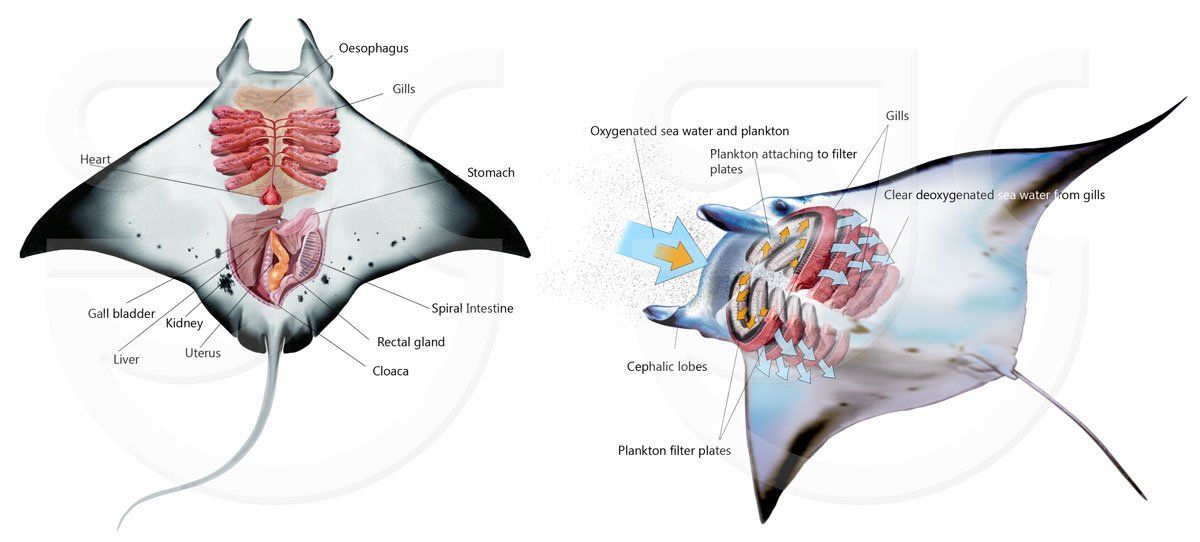

Manta rays make regular visits to cleaning stations-spots on a coral reef where sea animals go to be cleaned by smaller creatures-where they stay still for several minutes while cleaner fish remove parasites and dead skin. They’re considered predators and hunt deep below the surface of the sea.

Giant manta rays live alone or in small groups, typically congregating to feed. They use creative techniques when feeding, often doing repeated somersaults to stay in a single spot that is packed with krill, or chain-feeding-following each other in a circle, mouths open, to create a cyclone effect, trapping food in a spiral. Habitat and feedingīoth species of manta ray are filter feeders: they swim with their mouths wide open, drawing in zooplankton and krill, which they sift through rows of tiny rakes that line their mouths called gill plates. While the smaller reef manta has an impressive wingspan of about 11 feet wide on average, the giant oceanic manta ray-the largest species of ray-can have a wingspan of up to 29 feet. In 2008, researchers discovered that there are actually two distinct species: the reef manta ray, which tends to live along coastlines in the Indo-Pacific, and the giant oceanic manta ray, which lives in all the world’s major oceans, spending most of its life far from land. Manta rays have two horn-shaped fins protruding from the front of their heads, which has also given them the nickname “devil fish.”įor decades, scientists thought there was just one species of manta ray. “Manta” means blanket or cloak in Spanish, describing the look of the animals’ large, flat, diamond-shaped bodies, which are characterized by triangular pectoral fins. The sea creatures live in tropical, subtropical, and temperate ocean waters across the globe. Manta rays-highly intelligent and highly threatened-are the largest rays in the world.


 0 kommentar(er)
0 kommentar(er)
